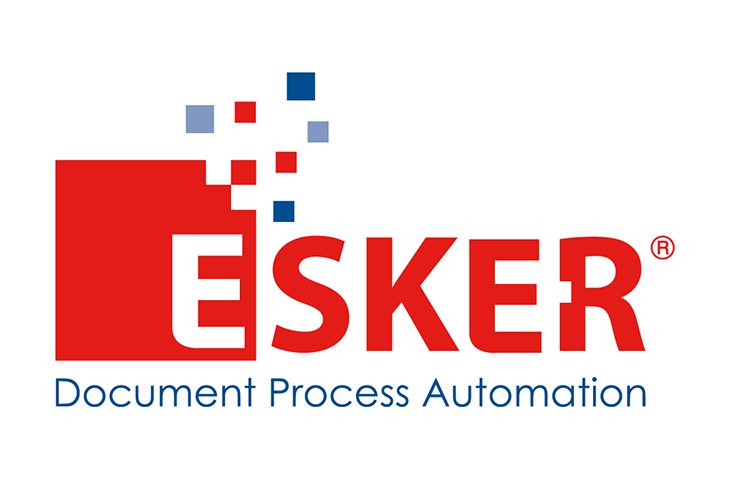Esker began as a French company – how has Esker successfully expanded in the U.S.?
Esker started as a software vendor in Lyon, France in 1985. Eventually we grew to operate in through-out Europe, North America, Latin America and Asia Pacific. During that time, Esker grew from a host emulation provider to a leading document automation company.
Esker recently expanded beyond the headquarters in Madison, WI and opened an office in Denver, CO to accommodate a growing customer base in the Rocky Mountain and Pacific states, along with the western region of Canada. Esker in North America has seen significant growth within the medical device, food production and semi-conductor industries.
As a global company, what challenges does Esker face working in different markets? How does Esker address those challenges?
Because Esker is a global company that serves global customers, our technology must address the unique needs of each market. For example, there are regulations around sending, receiving and e-signatures of documents such as invoices in many markets, particularly in Europe and Latin America. As a result, international e-invoicing tax compliance rules have caused confusion to many who are interested in adopting e-invoicing.
One of the ways Esker is addressing this challenge, is through a partnership in Latin America, where e-invoicing rules are different in nearly every country. We are working with Gosocket Corporation to provide a more comprehensive set of offerings while meeting the varying invoicing (e-invoicing) mandates. Gosocket is a leading electronic document exchange solutions provider based in Santiago, Chile.
Earlier this year, we acquired e-integration GmBH, a Germany-based electronic data interchange (EDI) service provider, to further grow, develop and address our customers’ needs in Europe’s leading market.
Esker is a platform that automates both the order-to-cash (O2C) and purchase-to-pay (P2P) cycles. On the P2P side, what are the main challenges accounts payable (AP) professionals are facing and how does automation help?
Accounts payable (AP) departments get a bad reputation when there are issues with profitability in an organization. However, manual invoicing activities and low-value clerical tasks may be the root cause of the AP department issues.
Under traditional systems, invoices are entered manually into an ERP system and then go through a tedious multistep approval process. Because invoices are manually stored, organizing and searching for documents can make the process even longer. For managers, visibility and control is extremely limited, putting the company at risk for errors, missed vendor discounts and late payment fees.
AP automation software allows businesses to eliminate the manual touch points of traditional AP processing with intelligent capture, touchless processing and electronic workflow capabilities. Organizations can bypass long reconciliation and payment cycles, eliminate visibility issues, avoid invoice errors, take advantage of vendor discounts, and improve supplier and AP staff satisfaction. Automation also offers scalability, so that the flex of AP invoice volume doesn’t create more work for AP departments and keeps processes efficient.
Esker unifies AP automation software with the purchasing aspect of the P2P cycle. This creates an end-to-end solution, allowing organizations to gain control over spending, visibility and lost profits. Today’s businesses simply can’t afford to fall back on standard practices that can impact both financial and operational integrity.
AP automation eliminates visibility issues, how do companies benefit from this specifically?
AP automation allows a company to go beyond locating invoices in a sea of documents, it also collects important information to help a company make smart business decisions. With a dashboard of analytics that is updated in real-time, companies can view the average time it takes to process orders, identify problem areas like pending orders and the associated cash flow, and manage resources more strategically. Running reports that analyzes critical activities takes companies to the next level of accounts payables processes.
How does AP automation help companies maintain their competitive edge?
One way that companies can maintain a competitive edge is by securing their relationships with their suppliers. AP automation benefits both parties through programs like dynamic discounting – encouraging suppliers to pay invoices early in exchange for a percentage discount – rapid dispute resolution, reduced invoice status calls and less paper handling with e-invoices.
Another method is by helping companies adapt quickly and seamlessly to changes in their industry or company, including growth, emerging markets, mergers or acquisitions. One in four Esker employees is dedicated to research and development. Esker then uses an Agile methodology to swiftly bring these product developments to our customers and implement them in frequent increments so that they can adapt and scale as needed.
What types of trends are you seeing in the P2P market?
There has been a lot of conversation in the industry lately about robotic process automation (RPA), the process of pushing data from one application to the next through automated communication systems. RPA is something that we incorporate into all of our solutions.
Document process automation still requires a little human intervention during AP invoice approvals. But, a business that processes a high volume of transactions needs a little more help, and that is where RPA comes in. The process of automating redundant tasks that human intervention was once needed for, is now taken on by the RPA software, eliminating errors and speeding up the process.
AP invoices are semi-structured documents, meaning they all have the standard information you would expect from an invoice, but every customer has a unique format that they use to present the information. Traditional AP solutions often need to develop templates to accurately read each invoice, which takes a great deal of time and cost for each template. RPA helps eliminate the need for templates, by learning the patterns of each invoice and extracting the data automatically without the need for templates. The also greatly reduces the manual steps involved when processing invoices.
Author Bio
Steve Smith is U.S. chief operating officer at Esker, a worldwide leader in cloud-based document process software to automate order processing, accounts receivable, accounts payable, purchasing and more. Smith is responsible for all operations in all of the Americas.
